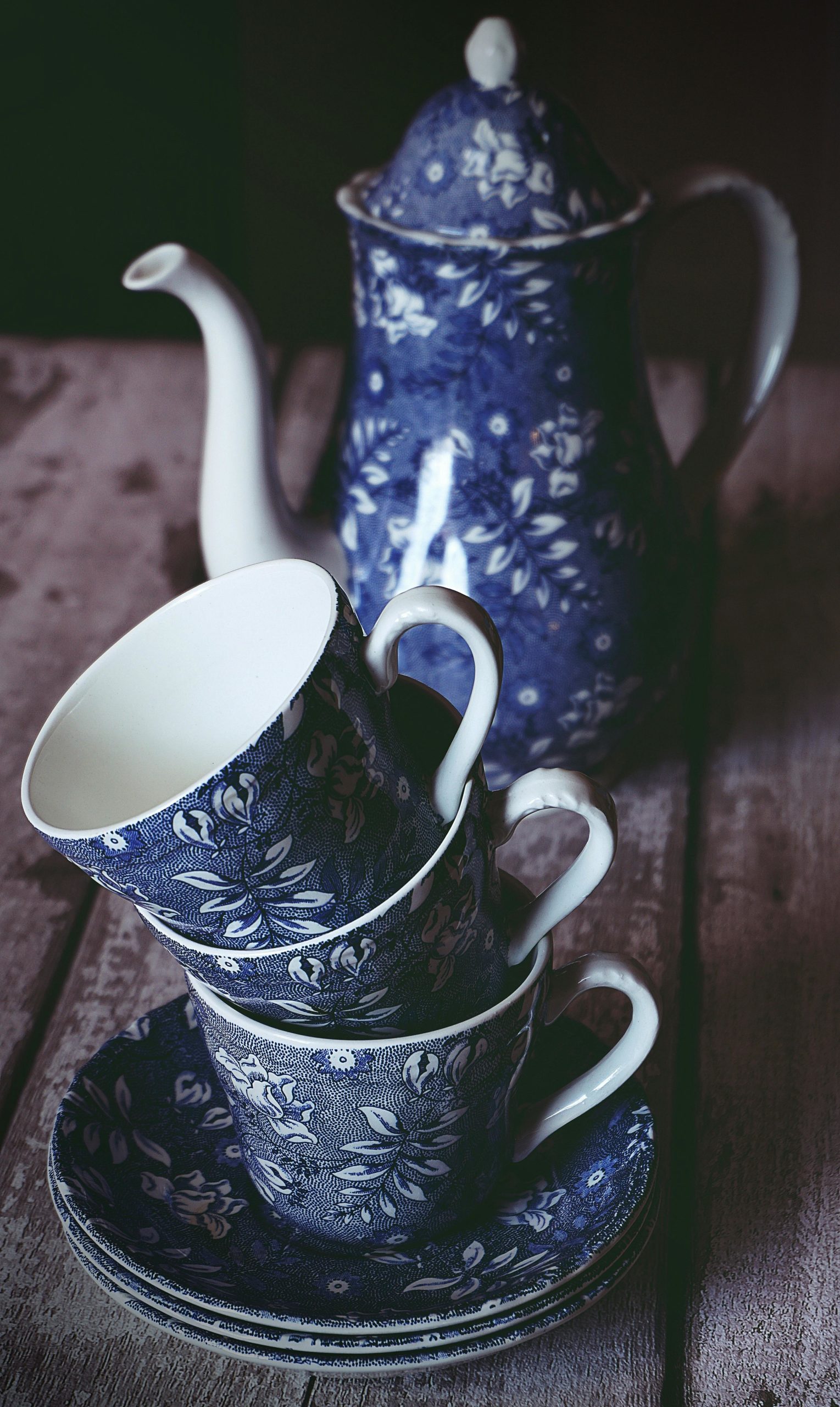Blue pottery of Rajasthan is more than just ceramic—it is a piece of history painted in shades of the sky. With roots in Persia and a home in Jaipur, this craft blends cultures, stories and artistry. Let’s explore its journey, how it is made and why it is worth preserving.
Blue pottery is not just art—it is a bridge between Rajasthan’s past and present. By choosing handmade blue pottery, you support artisans and keep a 600-year-old tradition alive.
A Glimpse into the History of Blue Pottery

Creating the Moulds
By using Plaster of Paris, moulds of varied sizes and shapes are created which are then allowed to dry.
Shaping the Product
A small amount of dough is flattened and put in the mould later. It is twisted gently so that the flattened dough takes the desired shape of the mould. When the dough has taken the shape, the artist fills wood dust inside the mould. Extra dough is removed from the mould using a knife. The dough is later removed from the mould and left to dry for 1-2 days.
Once hardened, the artist removes the dust using a koochi (small broom). It is then smoothened with the help of sandpaper, removing all the extra edges. The product is dipped in a mixture of quartz powder, powdered glass, maida (edible flour) and water. It is left to dry again. Once dried, the product is rubbed again with sandpaper to make it even. After smoothening, the product is ready for paint.
Painting and Firing
- First Firing: The dried pieces are baked at 800°C to harden them.
- Major Colours: Two major colours used in blue pottery are Ferro and Oxide colours. These oxides are mixed with edible gums, which act as a binding agent.
- Hand-Painting: Artists use natural dyes—cobalt oxide (blue), copper oxide (green), and manganese (black)—to create intricate patterns.
- Second Firing: The painted pieces are glazed and fired again at 1,000°C to lock in the colours.
Glazing the Product
Various raw materials, including borax, zinc oxide, potassium nitrate, boric acid, and powdered glass, are used to create a unique glaze. Borax lowers the melting point of certain basic materials, which are heated to a high temperature. After everything is finished, the mixture is cooled with cold water and breaks into splinters. After being gathered, splinters are crushed. To create glaze, water is added to the powder. The artist makes sure the product is evenly coated.
- Blue: The blue colour of the pottery represents the divine and infinity, inspired by Persian Sufi traditions.
- Peacocks: Rajasthan’s state bird, symbolising beauty and monsoon rains.
- Floral Patterns: Reflect the Mughal love for gardens and Rajput royalty.
One can still find blue pottery tiles decorating Jaipur’s Hawa Mahal and City Palace. Families also pass down hand-painted pottery as heirlooms.
Challenges the Craft is Facing
- Cheap Imitations: Factories in Moradabad and Uttar Pradesh mass-produce machine-made copies of blue pottery, flooding markets with low-cost alternatives. These imitations are sold at half the price of authentic handmade pieces, making it difficult for traditional artisans to compete. The machine-made versions lack the intricate details, durability and cultural significance of the original craft, yet their affordability attracts buyers, threatening the survival of genuine blue pottery.
- The dearth of Artisans: The number of families practising this craft has dwindled significantly. Today, only 30–40 families in Jaipur continue to create blue pottery by hand. Younger generations are increasingly opting for more stable and lucrative careers, leaving fewer skilled artisans to carry forward this centuries-old tradition. This decline in artisans not only risks the loss of unique skills but also weakens the cultural heritage tied to the craft.
Rising Costs: The raw materials essential for blue pottery, such as quartz and cobalt oxide, have seen a sharp increase in prices over the last decade. The cost of quartz has doubled and the cobalt used for the iconic blue colour has become significantly more expensive. These rising costs make it harder for artisans to produce affordable pieces, further reducing their market competitiveness and profitability.
Looking for a Reliable Market to Buy Blue Pottery?
If one is looking for genuine blue pottery in Jaipur, here are two trusted places to visit:
Sanganer Workshops: Located in the heart of Jaipur’s pottery hub, you can visit Laxmi Colony, Main Road, Sanganer, or the factory at Heerayali Ka Khawda, Muhana Turn, Diggi Malpura Road, Sanganer. These workshops are run by skilled artisans who create and sell authentic blue pottery.
Pro Tip: Genuine blue pottery feels lightweight, is semi-transparent when held against light, and has a smooth, crack-free finish.
Experience the Art – Join a Blue Pottery Workshop!
For travelers who love immersive experiences, joining a blue pottery workshop is a fantastic way to witness this ancient craft up close. Many local studios offer hands-on sessions where you can try your hand at painting or molding a masterpiece of your own.
Take a Piece of Rajasthan Home – Book Your Cultural Tour Today!
Don’t just admire blue pottery from afar—experience it firsthand! Our exclusive Rajasthan Art & Craft Tour takes you through the vibrant markets, workshops, and historic sites where this beautiful art form thrives.





